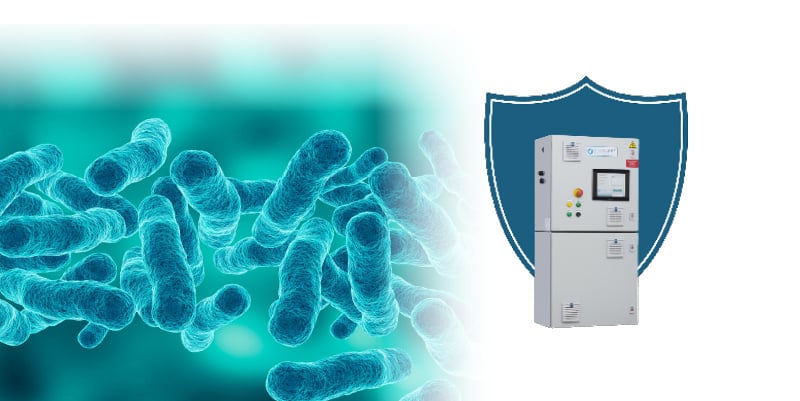The Growing Health Threat of Legionella Bacteria
Legionella bacteria, primarily known for causing Legionnaires' disease, pose a significant health threat to populations worldwide. Every year, thousands of individuals in North America alone are affected by this potentially fatal pneumonia. The bacteria thrive in water systems and can become airborne, spreading the risk of infection over large areas. This underlines the critical need for effective monitoring and management strategies in building water systems to prevent outbreaks and protect public health.
Water systems in buildings, particularly cooling towers, are vulnerable to Legionella contamination. Without timely intervention, these systems can become breeding grounds for bacteria, leading to rapid and uncontrolled spread. The health implications are severe, as Legionnaires' disease can be hazardous for older adults, smokers, and those with weakened immune systems. Given these risks, building owners and facility managers must implement proactive monitoring solutions.
Understanding the Need for Continuous Monitoring
Traditional methods of monitoring Legionella bacteria often involve manual sampling and lab analysis, which can be time-consuming and may not provide timely results. Since Legionella can proliferate quickly, these methods might not offer the rapid response needed to prevent an outbreak. This gap in effective monitoring makes continuous and automated solutions essential for modern water system management.
Continuous monitoring allows for real-time detection of bacterial growth, enabling swift action to mitigate risks. By implementing these systems, building managers can ensure that they are always a step ahead in preventing contamination and ensuring the safety of occupants. Moreover, it aligns with the growing regulatory demands for health risk management in water systems, particularly in densely populated areas.
Advancements in Automated Detection with the Lp15 Solution
The partnership between RMC and BioAlert Solutions has led to a breakthrough in Legionella detection with the development of the Lp15 solution. This state-of-the-art technology offers a unique automated detection system that operates continuously without human intervention. Installed on-site, the Lp15 provides a seamless way to monitor water systems for Legionella bacteria, ensuring compliance with health standards while minimizing the need for specialized training.
The Lp15 solution stands out for its ability to provide rapid analysis, with results available in less than four hours. It offers 98% reliability compared to traditional cell culturing methods, making it a dependable choice for building owners looking to safeguard their premises. Additionally, the system's remote control and automated alerts enable facility managers to respond promptly to potential issues, reducing the risk of uncontrolled contamination and associated economic or legal consequences.
Ensuring Compliance and Safety in Building Water Systems
Compliance with health and safety regulations is paramount for any building owner or operator. With the threat of Legionella, ensuring that water systems are up to standard requires diligent monitoring and management. The Lp15 solution not only meets but exceeds regulatory requirements by providing continuous sampling and real-time data on water quality.
By adopting such advanced monitoring technologies, building managers can demonstrate their commitment to public health and safety. This proactive approach not only protects those who use the facilities but also enhances the reputation of the organization as a leader in health and safety standards. With the peace of mind that comes from knowing their systems are continuously monitored, facility managers can focus on other core business operations.
Cost-Effective Management and Environmental Benefits
Investing in automated Legionella monitoring can lead to significant cost savings over time. By preventing outbreaks and reducing unscheduled downtime, building operators can avoid the substantial financial impacts associated with health scares and potential legal action. Additionally, the Lp15 solution helps to optimize water system operations, leading to reduced operational costs and a smaller environmental footprint.
Continuous monitoring ensures that any issues are identified and addressed before they escalate, which can save money on extensive remediation efforts. Furthermore, by maintaining optimal water quality, buildings can improve their energy efficiency, contributing to broader sustainability goals. In an era where environmental responsibility is increasingly prioritized, such systems offer dual benefits of cost savings and reduced ecological impact.
Becoming a Leader in Health and Safety Standards
Incorporating advanced Legionella monitoring solutions like the Lp15 positions building owners and facility managers as leaders in health and safety. By prioritizing the well-being of occupants and aligning with stringent safety standards, organizations can set themselves apart in the industry. This commitment to excellence not only protects the immediate community but also builds trust and credibility with stakeholders.
As awareness of Legionella risks grows, so does the expectation for responsible management practices. By staying ahead of the curve with cutting-edge technology and proactive strategies, organizations can not only comply with regulations but also exceed them, setting new benchmarks in public health safety. Engaging with experts like RMC ensures that these systems are implemented effectively, providing unparalleled support in safeguarding against Legionella risks.
In conclusion, the integration of continuous and automated Legionella monitoring is not just a regulatory requirement but a strategic investment in health, safety, and environmental sustainability. By adopting solutions like the Lp15, building owners can protect their occupants, reduce risks, and lead the way in setting new standards for water system management.
.


